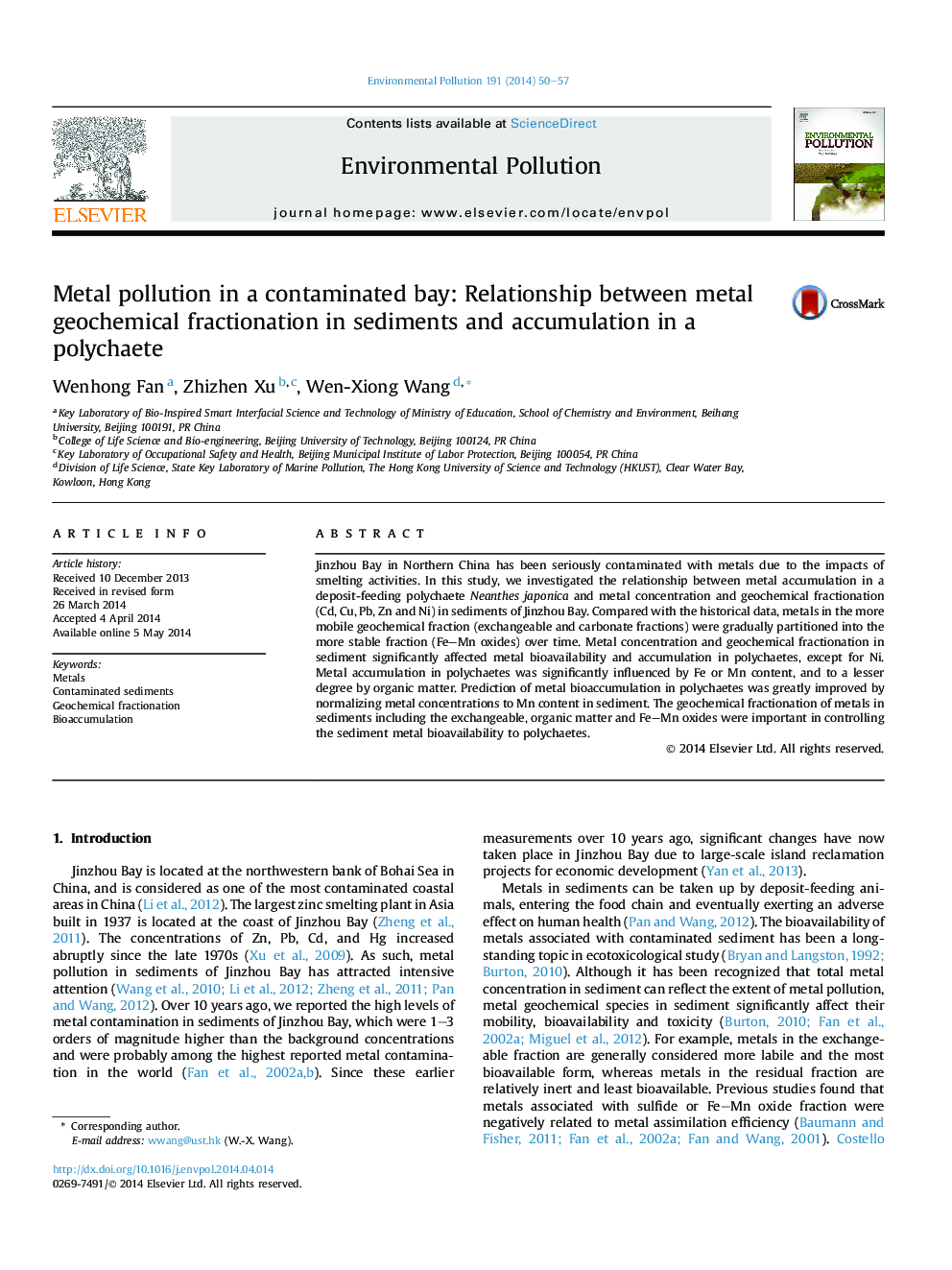| Article ID | Journal | Published Year | Pages | File Type |
|---|---|---|---|---|
| 4424426 | Environmental Pollution | 2014 | 8 Pages |
•Metals in contaminated sediments gradually partitioned into the more stable phase over time.•Metal accumulation in polychaetes was more significantly influenced by Fe/Mn content than by organic matter.•Prediction of metal bioaccumulation greatly improved by normalizing metals to Mn content in sediment.•Metals in exchangeable, organic matter and Fe–Mn oxides were important in controlling their bioavailability.
Jinzhou Bay in Northern China has been seriously contaminated with metals due to the impacts of smelting activities. In this study, we investigated the relationship between metal accumulation in a deposit-feeding polychaete Neanthes japonica and metal concentration and geochemical fractionation (Cd, Cu, Pb, Zn and Ni) in sediments of Jinzhou Bay. Compared with the historical data, metals in the more mobile geochemical fraction (exchangeable and carbonate fractions) were gradually partitioned into the more stable fraction (Fe–Mn oxides) over time. Metal concentration and geochemical fractionation in sediment significantly affected metal bioavailability and accumulation in polychaetes, except for Ni. Metal accumulation in polychaetes was significantly influenced by Fe or Mn content, and to a lesser degree by organic matter. Prediction of metal bioaccumulation in polychaetes was greatly improved by normalizing metal concentrations to Mn content in sediment. The geochemical fractionation of metals in sediments including the exchangeable, organic matter and Fe–Mn oxides were important in controlling the sediment metal bioavailability to polychaetes.
